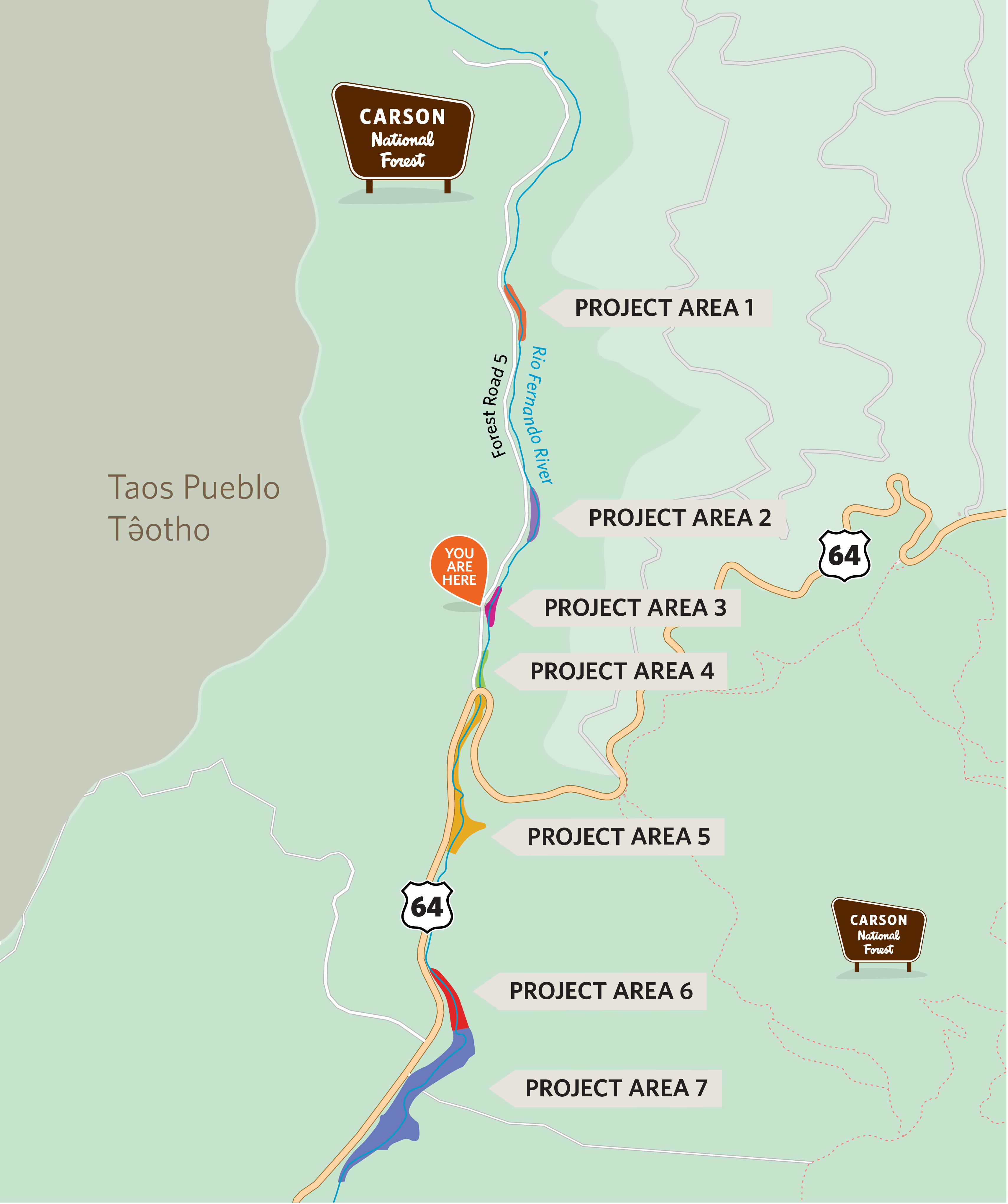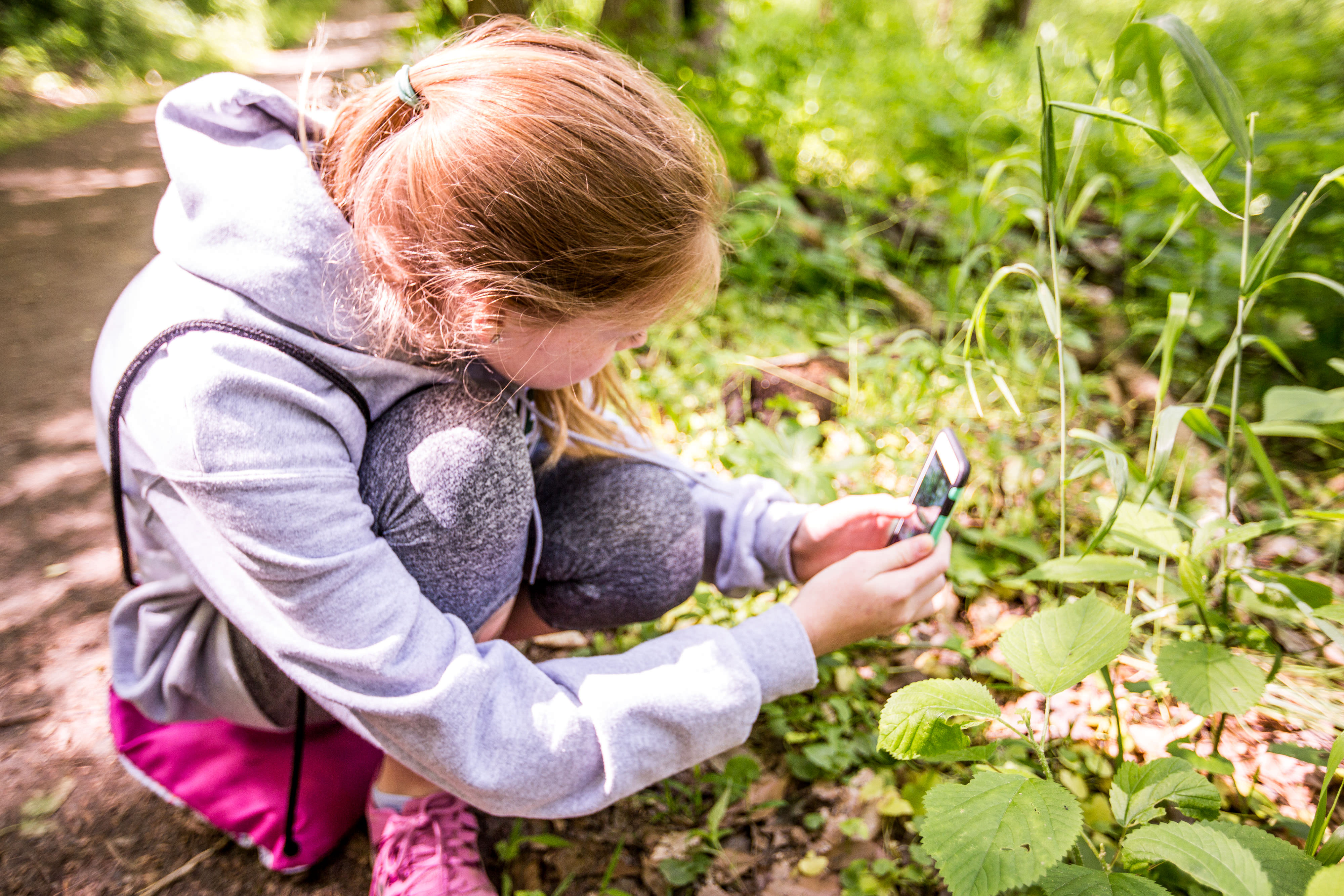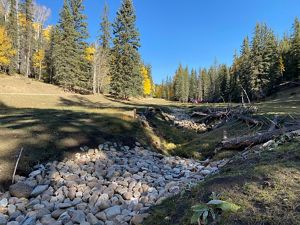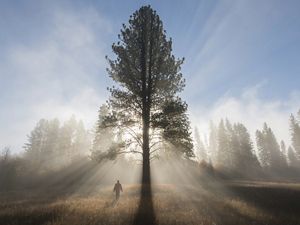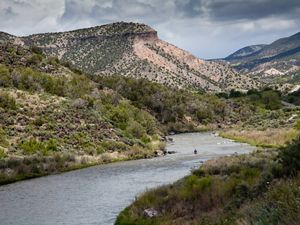The Rio Fernando flows through the heart of Taos serving as a primary water source for produce, plants and wells. Migrating birds soar over the stream during spring and fall migrations, and the area provides forage for locals like the Northern goshawk and the American dipper. People who live here rely on the waterway to connect with nature whether you camp, canoe, hike or simply find peace when listening to the rippling water.
Beneficial Partnerships
The river and surrounding vegetation supports cattle ranching as well, which is part of our region’s cultural identity and economy. By utilizing pasture fencing and working with community grazers, this project increases forage and provides water access to the herds while protecting sensitive river areas.
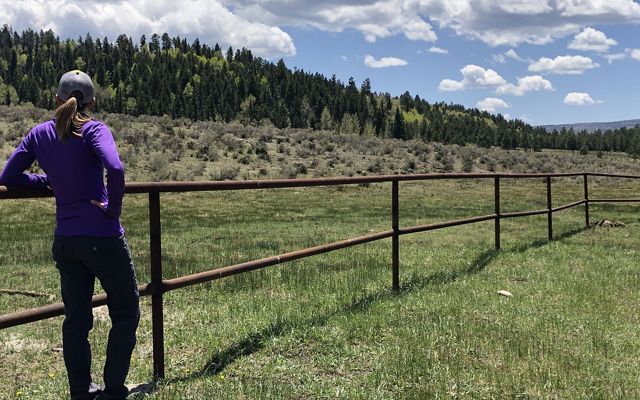
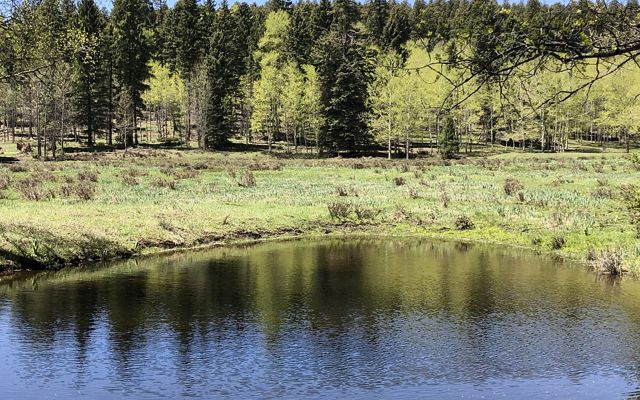
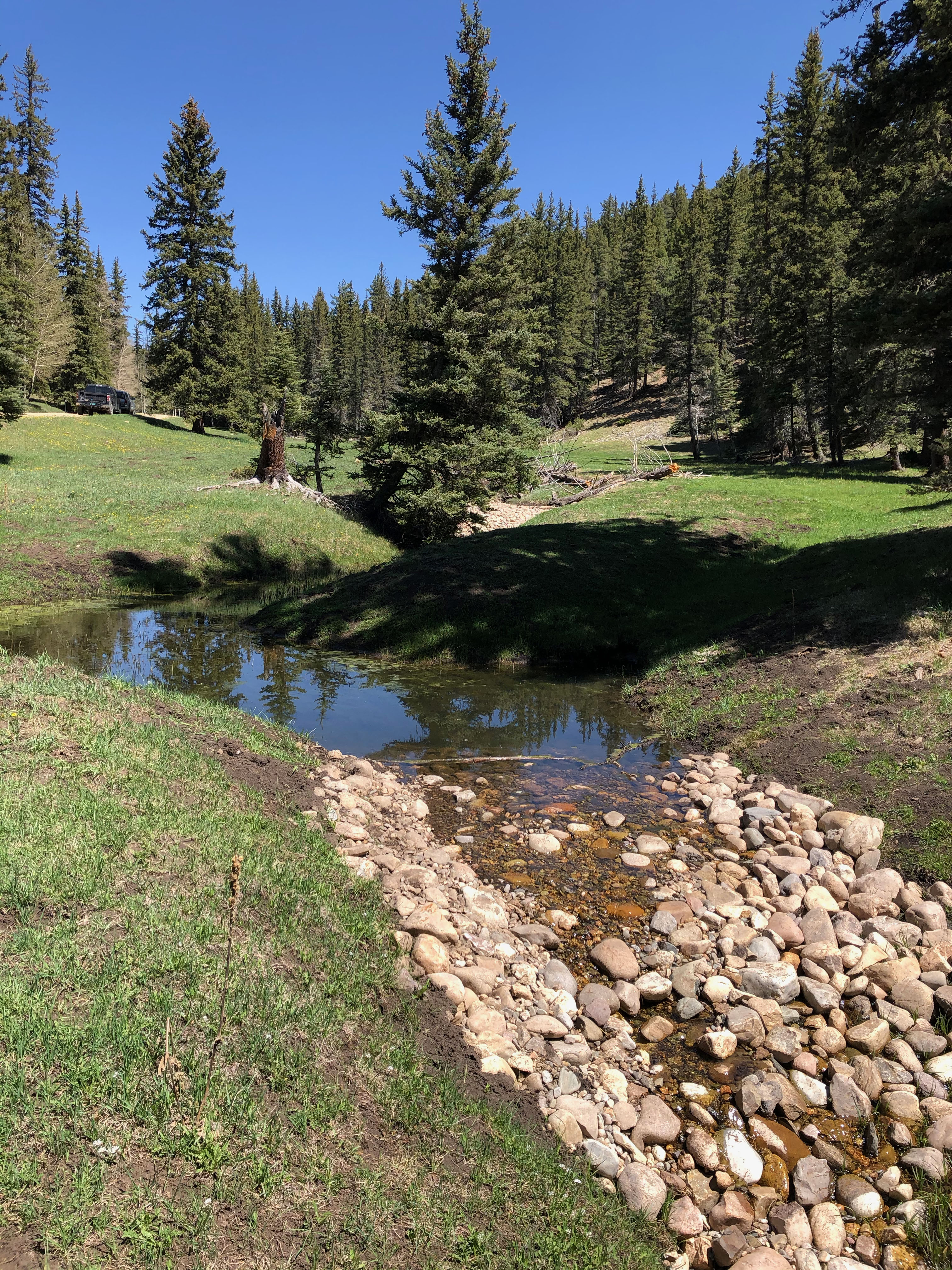

We Can't Save Nature Without You
Sign up to receive monthly conservation news and updates from New Mexico.
Simple Structures, Complex Benefits
You can see repair techniques along the riverscape here, including one-rock dams and earthen plugs. They help slow water down and spread it out, so it can be absorbed into the ground for use during the hotter and drier months.
One rock dams are a single layer of rock in the bed of the river channel. They stabilize the riverbed by slowing the flow of water, encourage vegetation growth and capture sediment, which raises the bottom.
Earthen plugs are a critical part of the restoration strategy. These small, low walls in the river prevent water from rushing downstream and instead spread it out across the wetland meadow. Plugs protect vulnerable streambanks and prevent further erosion.
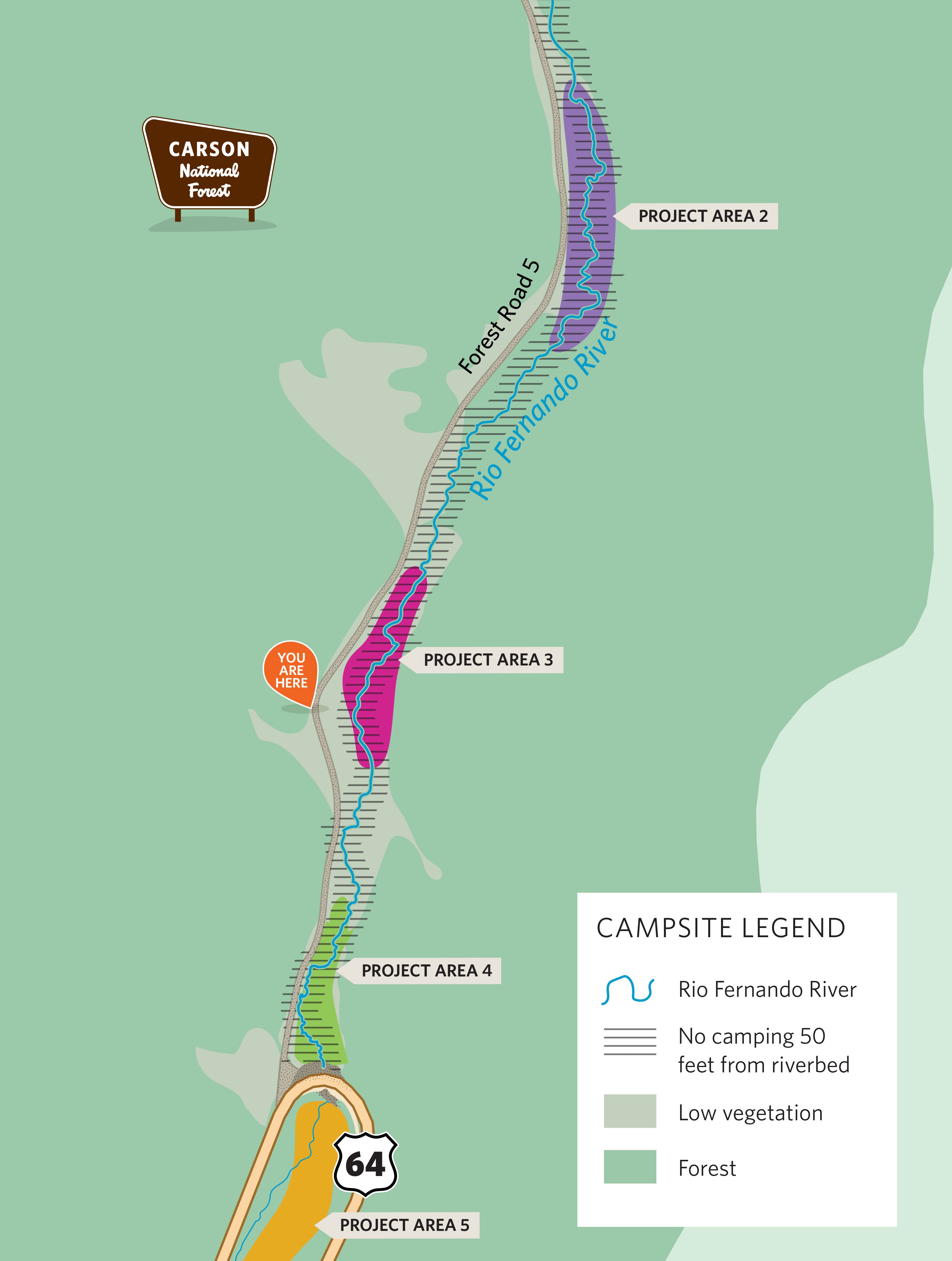
Best Practices for Recreational Land Use

Camping Responsibly
Wetland restoration required enhancing the stream corridor. Please do not camp within 50 feet of the riverbank.
- Creating new campsites kills vegetation and leads to soil erosion.
- Do any washing at least 200 feet from rivers, streams, lakes or wetlands.
- Visitors must park more than 100 feet from the riverbank and wetlands, as vehicle traffic can compact soil and can crush or break new plantings.
- Leave No Trace—Hike/carry out all trash and pet waste. Leave the area in its natural state.
- Cutting down or removing even small trees from this area is prohibited.

Respect Trees of All Sizes
Trees big and small have a big impact in this restoration project. Smaller trees and saplings are planted along the banks to help improve the riverways. Cutting them down destabilizes new work underway. Carving or chopping into the trunks of larger trees can damage the tree and deprive the tree of nutrients and food, slowly starving it to death.

Campfire Safety
Keep your campfire small. Use local wood: firewood brought from another area could also bring invasive pests that could harm local trees. If collecting firewood for your campsite is absolutely necessary, collect dead and down wood only.
Never leave a campfire unattended, even for a few minutes. Many wildfires start from abandoned fires expected to burn out or because someone thought a fire was already out. Do not bury your fire, as the coals can smolder and re-ignite. Stir the remains, add water and dirt, and stir again.
Key Partnerships
This wetland restoration project is a proud partnership between The Nature Conservancy, Amigos Bravos, U.S. Forest Service, Rio Fernando de Taos Revitalization Collaborative, the Rio Grande Water Fund, the New Mexico Department of Game & Fish, Taos Ski Valley Foundation and Watershed Artisans.

